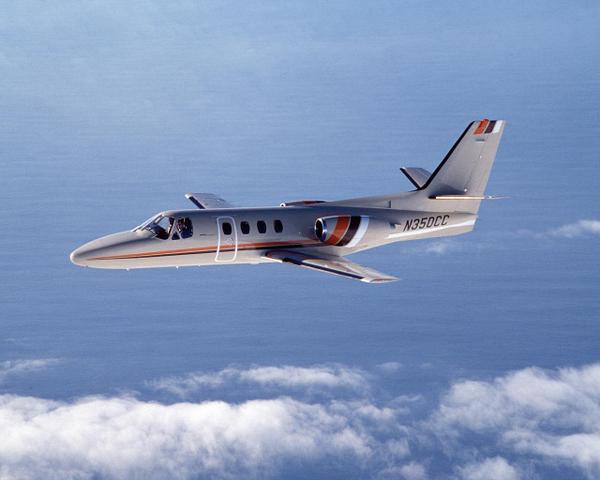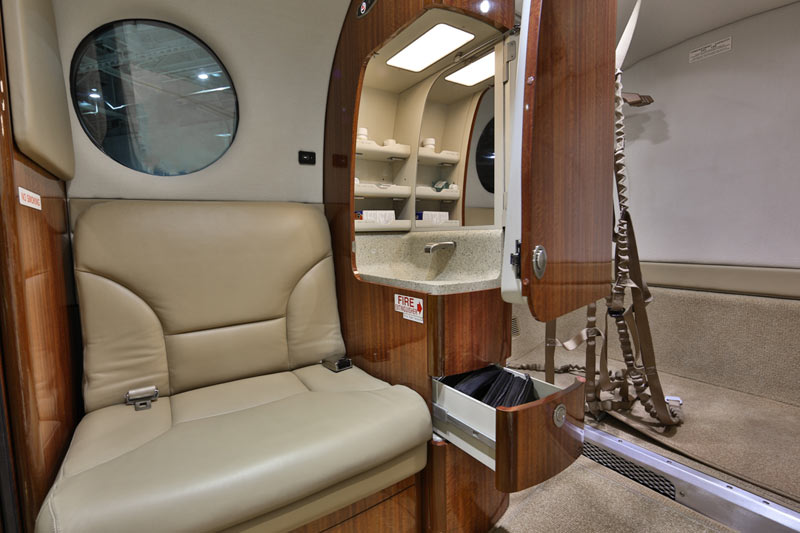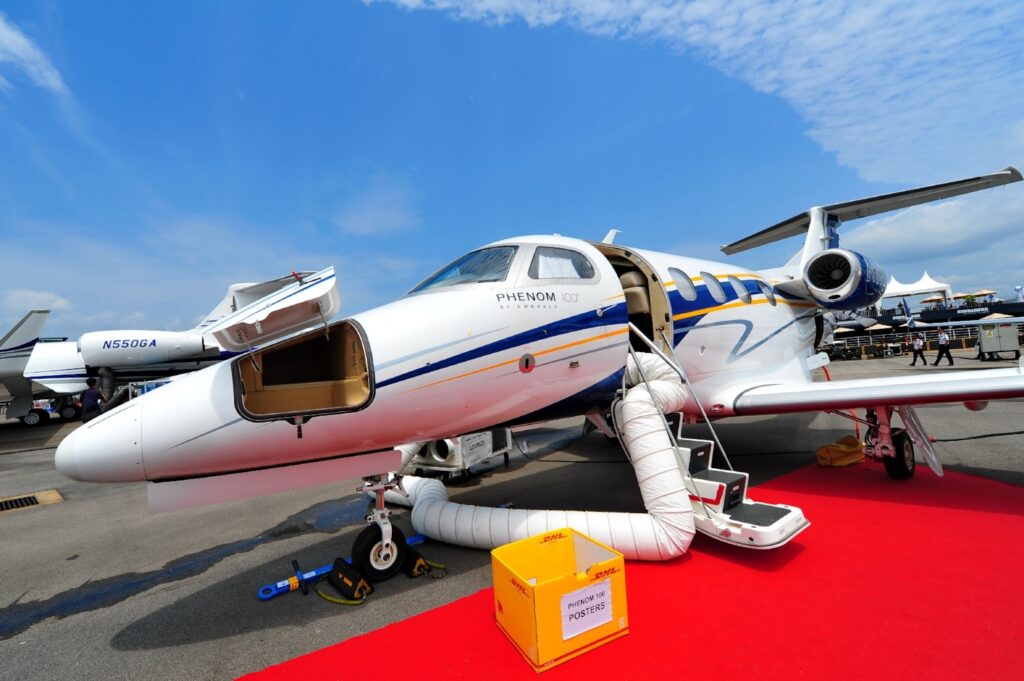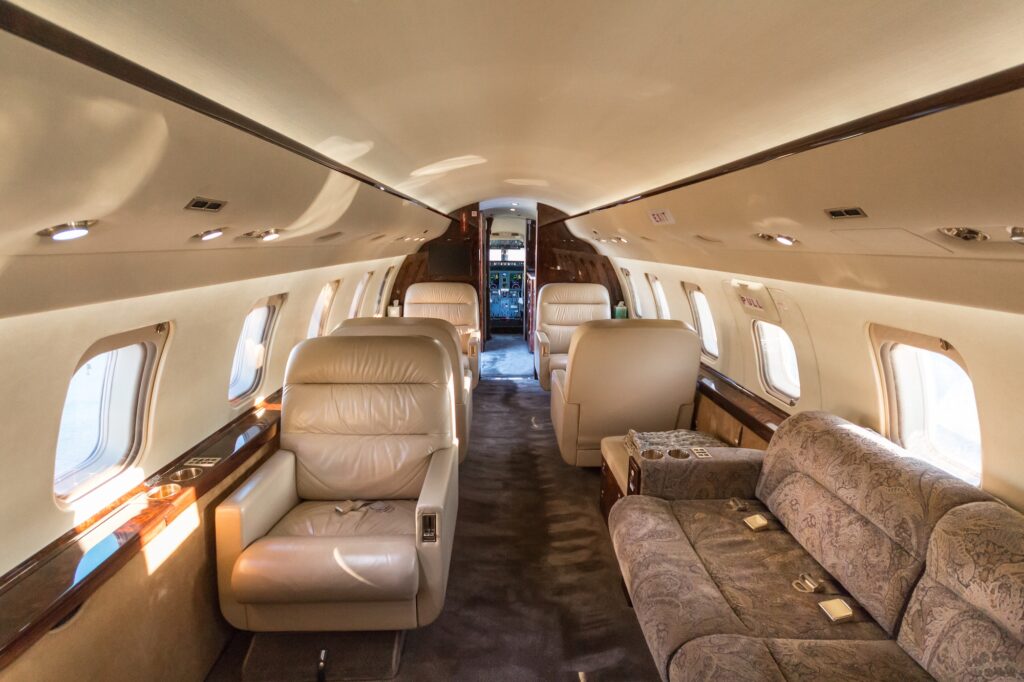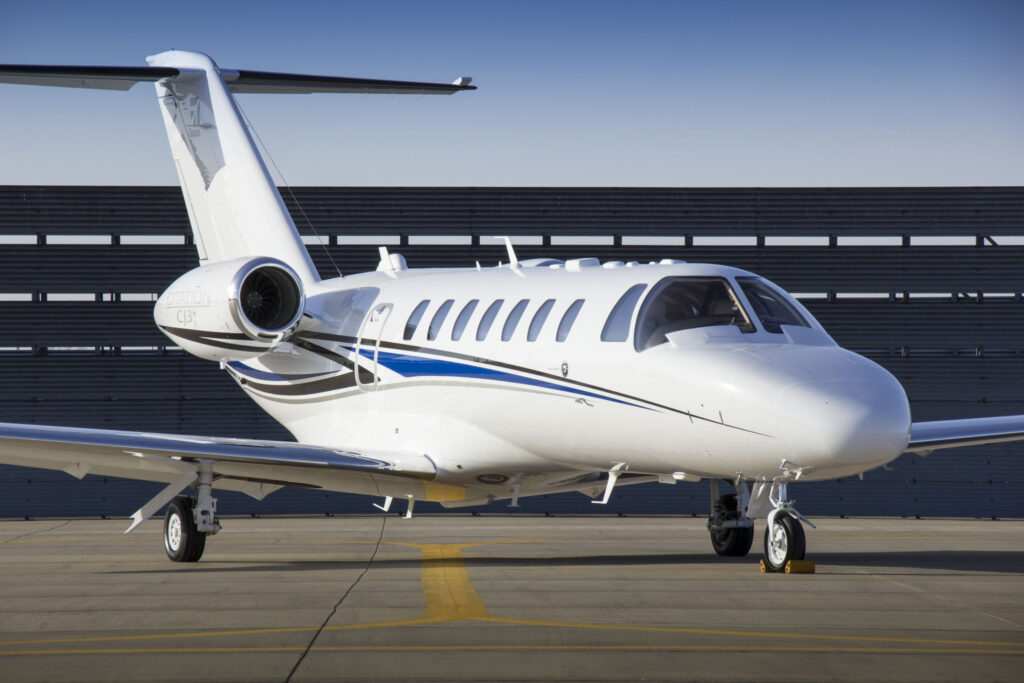Citation I
The Citation I, which was initially marketed as the Citation 500 (the prototype was called the FanJet 500), was Cessna’s first Citation. The Citation 500 received FAA certification in 1971. In 1976, Cessna improved upon the 500 with a longer wingspan, higher maximum gross weight and the addition of thrust reversers. The upgraded aircraft was dubbed the Citation I. Cessna also created a single-pilot certified version of the Citation I named the Citation I/SP, first delivered in 1977.
The Citation I is powered by two Pratt & Whitney Canada JT15D-1 engines. It has a normal cruise speed of 336 knots, a range of 1,328 nautical miles, a climb rate of 2,680 feet per minute, and requires approximately 3,510 feet to takeoff and 2,673 to land.
Citation II
Next up for Cessna was the Citation II, also known as the Model 550. The Citation II’s redesigned cabin has room for one more passenger (seven in its typical configuration with two pilots as opposed to six in the Citation I). Like the Citation I, the II also has a single-pilot variant called the Citation II/SP.
Produced from 1978 to 1994, the Citation II has more powerful Pratt & Whitney Canada JT15D-4 engines. It has a normal cruise speed of 346 knots, a range of 1,378 nautical miles, a climb rate of 3,070 feet per minute, and requires approximately 4,466 feet to takeoff and 2,737 to land.
Citation S/II
In 1983, Cessna began production of an improved version of the Citation II, the Citation S/II (Super II). The S/II has a cabin identical to that of the Citation II, but has a more deeply swept wing, larger fuel capacity and more powerful engines.
The S/II comes equipped with upgraded Pratt & Whitney JT15D-4B engines. It has a normal cruise speed of 376 knots, a range of 1,826 nautical miles, a climb rate of 3,040 feet per minute, and requires 4,046 feet of runway to takeoff and 3,437 to land.
Citation Bravo
In 1994, Cessna announced development of yet another upgrade to the Citation II in the Citation Bravo. Built on the same basic airframe, the Bravo came equipped with improved engines, upgraded landing gear, an improved cabin and an upgraded avionics system.
The Bravo comes equipped with two Pratt & Whitney Canada PW530A engines. It has a normal cruise speed of 395 knots, a range of 1,587 nautical miles, a climb rate of 3,195 feet per minute, and requires 4,065 feet of runway to takeoff and 3,280 to land.
[ulp id=’ksrvpykbSKmvluGu’]

